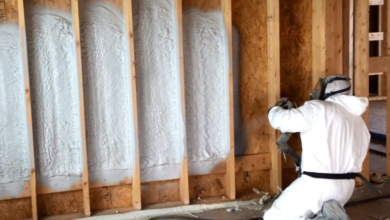How BREEAM Evaluates Energy Efficiency in Buildings?

Utilising BREEAM, buildings’ sustainability performance is defined and assessed, guaranteeing that projects fulfil sustainability objectives and maintain peak performance throughout time.
The specification, design, construction, and use of a building are assessed using BREEAM using accepted performance metrics that are compared to predetermined standards. The metrics employed cover a wide range of topics and standards, including energy and ecological. The most important elements are highlighted in each category. Such as lower carbon emissions, low-impact design, climate change adaptability, ecological value, and biodiversity preservation.
Using the Breeam assessment criteria to integrate sustainable measures as early in a project as possible reduces life cycle costs and boosts asset value. While also improving building user experience and health, corporate image and CSR requirements, and risk reduction. A thorough sustainability assessment technique for buildings that assesses their social, economic, and environmental performance is called BREEAM Certification. The certification process covers several different, broadly classified categories or components related to the design, construction, and operation of a building.
Origin and Background
Green building sustainability is rated using the optional BREEAM standard. It was created in the UK to assess how well buildings function environmentally. In 1990, BRE Global launched BREEAM in the United Kingdom after developing it. It paved the path for the design and construction of more ecologically friendly building environments. The major environmental impact that the worldwide building industry generated has been significantly reduced, thanks in large part to BREEAM. A method for assessing how closely constructed environment projects adhere to a set of exact and reliable sustainability objectives is called BREEAM. It also offers a way to tell customers about this information.
The BREEAM certification is comparable to other green certification schemes in this regard. The method operates by having an impartial party confirm the sustainability performance of a project. The project is assessed by a BRE Global-unaffiliated assessor. This assessor makes sure that the project is approved by many organizations. Quality assurance is provided by this method. Outside of the UK, Sweden, Norway, Spain, and the Netherlands are among the nations that have implemented the program. Because of its innate emphasis on sustainable design, the built environment is noticeably greener.
The Categories for BREEAM Assessments
Ten categories are taken into account by the BREEAM evaluation process, covering a variety of topics related to any build. These several BREEAM evaluation categories are designed to provide the most thorough measurement of a building’s sustainability in which energy efficiency is on top. Let’s examine the Energy efficiency in more detail to see how they evaluate a structure.
Efficiency in Energy Use
The energy efficiency of a structure directly affects its energy consumption, operating expenses, and carbon emissions during operation, which makes it an essential part of sustainable building design. BREEAM Certification considers various factors when assessing a building’s energy performance, such as:
Building envelope:
A building’s walls, roof, floors, windows, and doors all have an impact on how much heat is lost and how much energy is used for heating and cooling. These factors include the building’s design and insulation levels.
HVAC systems:
The building’s entire energy productivity and the energy usage of its HVAC (heating, ventilation, and air conditioning). These systems are determined by their efficiency. BREEAM advocates the use of energy-efficient technology, optimum sizing, and appropriate management to optimize energy usage.
Light
A building’s energy usage can be greatly decreased using energy-efficient lighting options like LED lamps and smart controllers. Utilising daylighting techniques to reduce the need for artificial lighting during the day is another factor taken into account by BREEAM Certification.
Renewable Energy
A building’s energy efficiency can be further increased and its dependency on fossil fuels can be decreased by incorporating renewable energy sources such as biomass systems, wind turbines, and solar panels.
Monitoring and Controlling Energy
To assess energy use in real-time, find areas for improvement, and streamline building operations. BREEAM Certification encourages the installation of energy monitoring and management systems.
Final Thought
Finally, a well-known and acknowledged method for building owners and developers to show their dedication to sustainability and environmental performance is through BREEAM certification. Through the application of performance criteria. BREEAM assesses buildings and provides a rating that takes into account their environmental impact as well as their marketability and worth.




